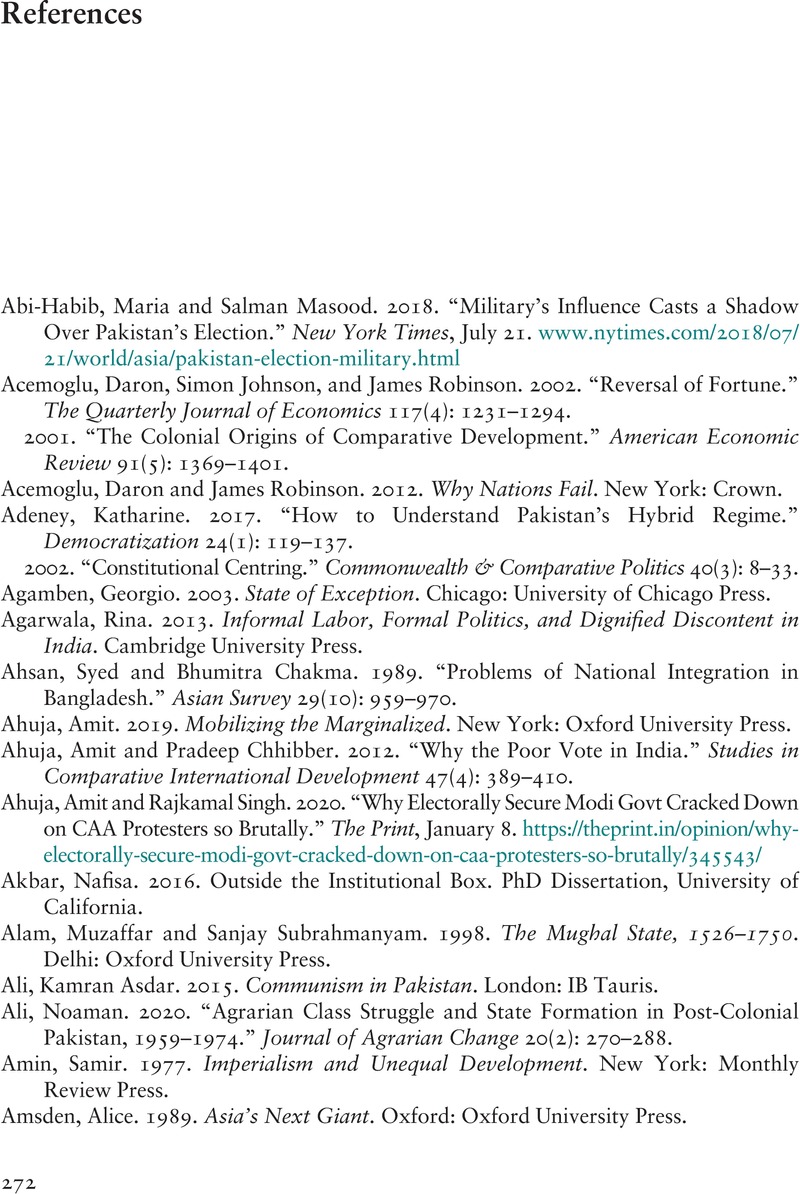References
Published online by Cambridge University Press: 09 June 2022
Summary

- Type
- Chapter
- Information
- Patchwork StatesThe Historical Roots of Subnational Conflict and Competition in South Asia, pp. 272 - 291Publisher: Cambridge University PressPrint publication year: 2022



